Purple Sweet Potato Plant: A Complete Guide
The purple sweet potato plant, known for its vibrant color and rich flavor, is a unique addition to any home garden. This nutrient-dense tuber is not only visually stunning but also packed with antioxidants, making it a popular choice for those interested in adding variety to their garden and diet. In this guide, we’ll explore the best ways to grow, care for, and use purple sweet potatoes, along with their origins, benefits, and tips for planting in various settings.
What Is the Purple Sweet Potato Plant?

The purple sweet potato, scientifically known as Ipomoea batatas, is a colorful variety of sweet potato that originates from Central and South America, with specific cultivars grown in Okinawa, Japan, and Hawaii. It’s easily recognizable by its deep purple flesh, which is packed with anthocyanins—the antioxidants responsible for the vibrant color. These tubers have a mild, nutty flavor that sets them apart from traditional orange sweet potatoes and are commonly used in both sweet and savory dishes.
This unique plant has gained popularity not only for its color and taste but also for its numerous health benefits, making it a staple crop in many regions around the world.
Benefits of Growing Purple Sweet Potatoes
Purple sweet potatoes offer numerous health benefits, making them a valuable addition to any diet. Their striking color, delicious flavor, and rich nutrient profile make them a powerhouse food worth adding to your meals. Here’s a closer look at some of the key advantages of incorporating purple sweet potatoes:
- High in Antioxidants: The anthocyanins in purple sweet potatoes give them their vibrant color and offer significant health benefits. These antioxidants help combat oxidative stress in the body, reduce inflammation, and may support brain health, memory, and mood. Comparable to the powerful antioxidants in blueberries and blackberries, anthocyanins are linked to a lower risk of chronic diseases and help protect cells from damage caused by free radicals.
- Nutrient-Dense: Purple sweet potatoes are packed with essential vitamins, including vitamins A and C, which play a critical role in supporting immunity, enhancing vision, and promoting skin health. Additionally, they contain essential minerals such as potassium and manganese, which contribute to healthy blood pressure, muscle function, and bone health. They’re also high in dietary fiber, which aids in healthy digestion and may help maintain a balanced gut microbiome.
- Low Glycemic Index: Compared to other starchy foods, purple sweet potatoes have a lower glycemic index. This means they cause slower and more gradual rises in blood sugar levels, making them a great option for those managing blood sugar or insulin sensitivity. Their lower glycemic impact makes them a good choice for people with diabetes or those seeking to maintain steady energy levels.
- Rich in Fiber for Digestive Health: The fiber in purple sweet potatoes not only supports digestion but also helps you feel fuller for longer, which can aid in weight management. Fiber also supports a healthy gut environment, contributing to a more balanced microbiome, which is essential for overall well-being.
- Versatile in Cooking: Purple sweet potatoes add a vibrant color and unique flavor to various dishes. Their mildly sweet, earthy taste makes them an ideal choice for both savory and sweet recipes, from curries and roasted vegetables to desserts and smoothies. They bring visual appeal to any plate, elevating the look of simple meals and making them a favorite among chefs and home cooks alike.
Growing purple sweet potatoes in your garden offers the advantage of fresh, nutritious produce that enhances your meals with both flavor and color. Having them in your garden also allows you to reap the benefits of these powerful nutrients right from home, adding a unique and healthy twist to your favorite dishes.
How to Grow Purple Sweet Potatoes
Growing purple sweet potatoes is rewarding and can be done in various ways, including raised beds, pots, or directly in the ground. Here’s a step-by-step guide to help you grow them successfully.
- Prepare the Soil: Purple sweet potatoes thrive in loose, well-draining soil with a pH between 5.0 and 6.5. Adding compost or mushroom compost improves soil structure, providing essential nutrients.
- Planting Slips: Purple sweet potatoes are typically grown from slips (small shoots that grow from mature tubers). Plant each slip about 12 inches apart, burying it 2-3 inches deep with only the leaves exposed. If you’re planting in containers, ensure there’s enough room for roots to develop.
- Provide Ample Sunlight: These plants require full sun, meaning at least six to eight hours of direct sunlight daily. If you’re growing them indoors or in limited sunlight, place them near a bright window or use grow lights.
- Water Regularly: Consistent moisture is essential for healthy growth. Water the plants deeply once or twice a week, allowing the soil to dry slightly between watering. Overwatering can lead to root rot, so ensure soil is well-drained.
- Support Growth with Mulch: Applying mulch around the plants helps retain moisture, keeps the soil warm, and prevents weeds. Organic mulches like straw or wood chips can improve soil quality as they break down.
- Fertilize as Needed: Purple sweet potatoes are relatively low-maintenance but benefit from occasional feeding. Use a balanced or low-nitrogen fertilizer to promote root growth over leafy growth. Avoid excessive nitrogen, as this may reduce tuber size.
By following these steps, you can grow robust purple sweet potato plants that yield flavorful, nutrient-packed tubers.
Growing Purple Sweet Potato Plant in Containers
If you have limited space or prefer to garden on a smaller scale, growing purple sweet potatoes in containers is an excellent option. Container gardening allows you to control soil quality and easily move the plants as needed.
Tips for Container-Grown Purple Sweet Potatoes
- Select a Large Pot: Choose a container at least 12-18 inches deep to allow enough room for root development. Ensure the pot has drainage holes to prevent waterlogging.
- Use Quality Potting Mix: A loose, well-draining potting mix enriched with natural fertilizers helps support growth. Adding a bit of worm castings can further enrich the soil.
- Position in Full Sun: Like garden-grown purple sweet potatoes, container plants need ample sunlight. Place them in the sunniest area available, whether on a balcony, patio, or rooftop garden.
- Regular Watering: Containers dry out faster than garden beds, so be diligent with watering. Ensure the soil remains moist but not soggy.
Container gardening offers flexibility, allowing you to enjoy the beauty and benefits of purple sweet potatoes even in small spaces. For more small-space gardening ideas, see our article on easy vegetables to grow in pots to create a diverse container garden.
The Difference Between Purple Sweet Potatoes and Orange Sweet Potatoes
- Color: The most obvious difference is the color. Purple sweet potatoes have a deep purple flesh due to the presence of anthocyanins, whereas orange sweet potatoes get their color from beta-carotene.
- Flavor: Purple sweet potatoes have a mildly sweet, earthy flavor, while orange sweet potatoes are sweeter and moister.
- Nutritional Value: Both types are nutritious, but purple sweet potatoes are especially rich in antioxidants, ideal for boosting antioxidant intake.
Understanding these differences can help you decide which variety best suits your taste and dietary preferences. Both varieties are nutrient-dense and versatile, making them great choices for any home garden.
Delicious Ways to Enjoy Purple Sweet Potatoes

Purple sweet potatoes are versatile and can be used in a variety of dishes, from savory meals to desserts. Here are a few popular ways to enjoy them:
- Mashed or Roasted: Roasting purple sweet potatoes brings out their natural sweetness and makes them a great side dish. Mashing them with a bit of coconut milk and seasoning is another tasty option.
- In Smoothies: Cooked and pureed purple sweet potatoes add a vibrant color and creamy texture to smoothies. Pair them with banana and almond milk for a nutritious breakfast.
- In Curries and Stews: Add chunks of purple sweet potatoes to curries or stews for a boost of color and flavor. Their earthy sweetness complements spices well.
- Baked Goods: Purple sweet potatoes can be used in cakes, pies, and muffins. Their natural sweetness reduces the need for added sugar, making them a healthy baking alternative.
- Grilled or Fried: Thinly slice and grill or fry purple sweet potatoes to create crispy, colorful chips or wedges.
Experimenting with these methods can help you make the most of your purple sweet potato harvest.
How to Store Purple Sweet Potatoes
Proper storage ensures your purple sweet potatoes remain fresh for longer. Here’s how to store them:
- Curing: After harvesting, cure purple sweet potatoes by keeping them in a warm, humid place for about a week. Curing helps develop their sweetness and makes them last longer.
- Cool, Dry Storage: Store cured sweet potatoes in a cool, dry place, ideally at 55-60°F. Avoid refrigeration, as it can alter their texture and flavor.
- Avoid Sunlight: Exposure to light can cause sweet potatoes to develop a bitter taste. Keep them in a dark, well-ventilated area, such as a pantry or cellar.
Following these storage tips ensures your purple sweet potatoes remain fresh and flavorful for months.
Final Thoughts on Growing Purple Sweet Potato Plant
The purple sweet potato plant is a vibrant, nutritious, and versatile choice for any garden. Whether grown in a container, raised bed, or directly in the ground, proper planting, watering, and care will ensure a successful harvest. These nutrient-rich tubers provide numerous health benefits and bring color and flavor to both sweet and savory dishes.
Using purple sweet potatoes in the kitchen adds a creative twist to meals, whether roasted, blended in smoothies, or added to baked goods. With their striking color and health benefits, purple sweet potatoes are a rewarding choice for gardeners and food enthusiasts alike. For more information on other unique varieties, explore our guide on the Okinawan sweet potato.






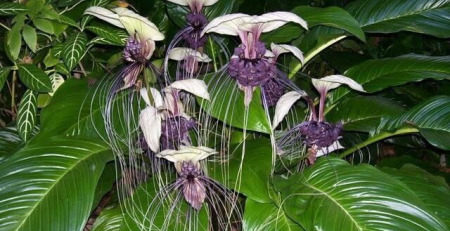

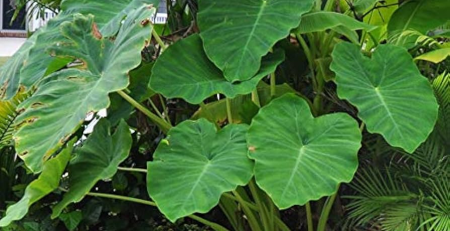

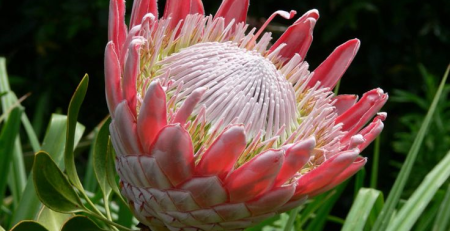
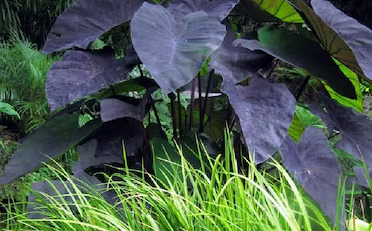
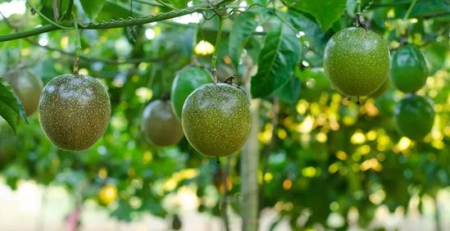
Leave a Reply